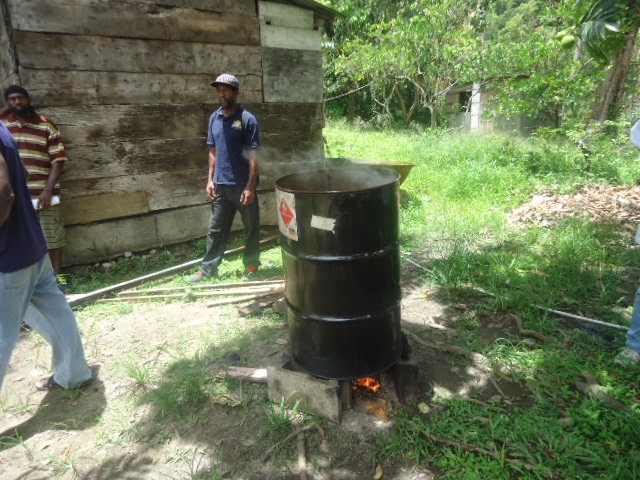In the time that I have been apologetically absent from active blogging duty, my neighbors have been busy accumulating garden specimens. Yes, I do have a previous post on pigeon peas; however, this one is purple! The pea pods as well as the peas inside are purple. Of course, I was excited by this addition since:
- Pigeon peas are delicious.
- The theory goes that purple-coloured fruits and vegetables offer increased antioxidant benefits.
 |
| The flower... |
Pigeon peas are photoperiodic and therefore coincide with one of the popular holidays-Christmas. While this post just missed FAO's 2016 International Year of Pulses, anytime is the best time to celebrate the nutritive role of pulses in a balanced diet. Usually they are grown without pesticides, another food safety advantage that the conscious foodie might celebrate. And who can deny the benefit that domestic production affords to household economics?
 |
| The fruit... |
I have since grown plants and cooked of the harvest during the festive season. Apart from the caterpillar pests, I have had stiff competition from the birds who prefer it to the green variety. But thankfully they allowed me to scrape together a decent amount to prepare as a side for the Christmas meal.
 |
| ...And the food. |
Best wishes for your heart's happiness in this new year. And when the balance of life shall deal equal share of disappointments, best wishes for literal and spiritual food to sustain your courage.




















